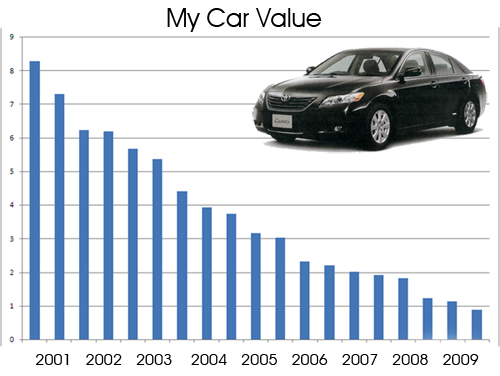 As with all collectibles (antiques), current value has everything to do with current supply vs. demand, and very little else: certainly little to do with the car's price when new or any objective standard. Thus, rare cars that are highly desired are highly expensive, while vehicles that are not fashionable to collect can be very cheap. Condition, of course, influences value. At the present time, the variation in purchase price between a poor condition and good condition vehicle is generally much less than the cost of restoring a poor condition car; thus it is cheaper in the long run to buy the better vehicle.
As with all collectibles (antiques), current value has everything to do with current supply vs. demand, and very little else: certainly little to do with the car's price when new or any objective standard. Thus, rare cars that are highly desired are highly expensive, while vehicles that are not fashionable to collect can be very cheap. Condition, of course, influences value. At the present time, the variation in purchase price between a poor condition and good condition vehicle is generally much less than the cost of restoring a poor condition car; thus it is cheaper in the long run to buy the better vehicle.
In some instances, professional restorers can, through economy of scale and performing the work in-house, realise a profit from buying an unrestored car and performing a restoration. This is normally only possible when the car is in high demand and either very rare (e.g. old Ferraris) or quite common (e.g. classic Ford Mustangs). Amateur restorers who are highly skilled may find it cheaper to restore than buy in good condition, but this is through considering their labor as enjoyment rather than as a cost. Some body shops make huge profits from doing restorations while business is slow to keep their workers busy.
Realising much long-term profit in owning an antique car is mostly about attempting to anticipate future changes in taste, which is highly speculative. Most cars go through a period of being considered merely old and undesirable before becoming valuable, and a car bought then might drastically increase in value. However, a car is a large object that is expensive to store and must be maintained, which cuts into profits.
0 comments:
Post a Comment